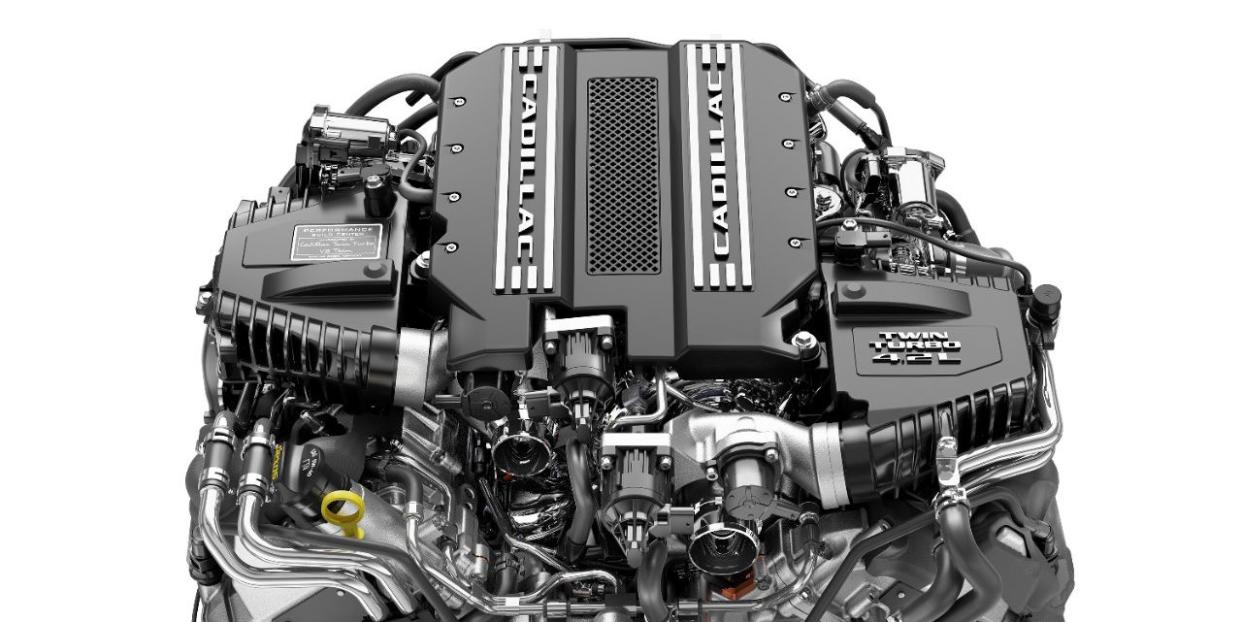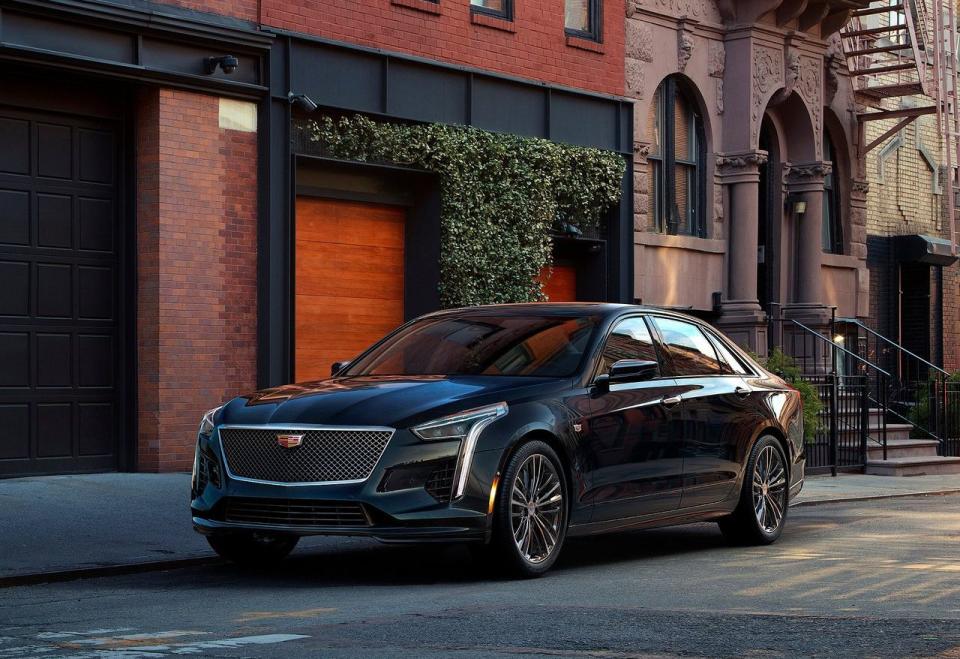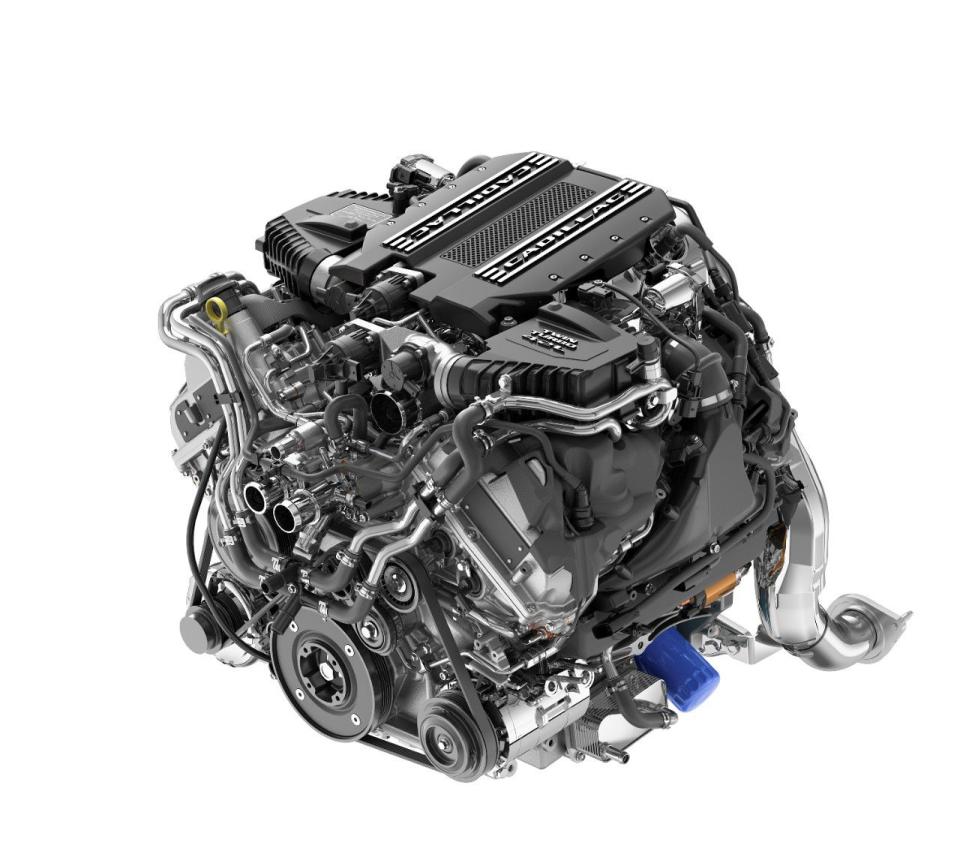Why GM Finally Let Cadillac Build an All-New Twin-Turbo V8

It used to be that each General Motors division had its own engines-Pontiac had Pontiac engines, Oldsmobile had Oldsmobile engines, and as good as Chevy engines were, no engineer in the rest of GM's divisions would be caught dead using them. There was rivalry. There was pride. Then came the 1970s. The cost of engine development shot up, and GM's "31 flavors of engine" evaporated. All of GM just used the same few engines, a lot of them from Chevrolet. Boring.
That’s the way it’s been for decades. But now, the GM bosses have given Cadillac the green light to go nuts and design a completely new 4.2L twin-turbocharged V8 just for itself. This powerplant will be out later this year in the 2019 CT6 and CT6 V-Sport.
The strange thing about this is that Caddy already has a V8. The CTS-V packs the 6.2L from Chevrolet's small-block engine family, and it'll keep using that engine even after the new 4.2L arrives in the CT6. Ever since their 2004 debut, CTS's have used small-blocks on the performance-oriented V-Sport trim levels. So why go through the expense of creating a new motor for the CT6 and not just use the small block Chevrolet (SBC)?
“Designing an all-new engine was the best way to achieve the… refined and powerful character we were looking for,” says Jordan Lee, chief engineer for the 4.2L. “The engine is biased toward torque versus peak power.” In layman's terms: The CT6 is a bigger, heavier, more luxurious car than the CTS, so its engine has to match its relaxed disposition.
The Old Meets the New

The 4.2L will put out 500 hp and 553 lb-ft. of torque on the regular CT6, and 550 hp and 627 lb-ft. of torque for the top-of-the-line CT6 V-Sport. Cadillac calls it a small-displacement V8, but 4.2L is a typical size for a V8-it's small only compared to the OHV V8s General Motors tends to use. Each will be hand-built at the Corvette plant in Bowling Green, Kentucky. Six engine builders are on the payroll to assemble them, but each motor is built by just one of them.
At its core, the new Cadillac engine's architecture breaks from the current SBC by being a double overhead camshaft (DOHC) design, in which the camshaft-the brain of the engine that opens and closes the valves, which control air/fuel mixture intake and exhaust flow-resides in each cylinder head. Although it’s complex, the DOHC design allows greater angles between intake and exhaust valves, which allows easier airflow through the engine compared to an overhead valve (OHV) design like that in the CTS-V's Chevy V8, in which the camshaft resides lower down in the engine block. In addition, overhead camshaft engines tend to have three or more valves per cylinder (the new Caddy 4.2L has four) versus two on most OHV engines, which is another airflow improvement.
Ninety percent of the 4.2L's torque is available from 2,000 to 5,200 RPM. That low-end grunt lets the CT6 move effortlessly around town and hustle up highway on-ramps without having to rev to the screaming high end of the tachometer. It’s less dramatic than the CTS-V's raucously tuned 6.2L, but more fitting for a car that thinks of itself as refined.
“The small block is known for its visceral sound and performance, which are great characteristics in our portfolio of performance cars like Corvette, Camaro, and Cadillac CTS-V,” says Tom Read, spokesman for GM Global Propulsion Systems. Read says the new Cadillac engine's four-valve DOHC architecture gives it a more “silk-like character with subtle, yet high-output performance.” Most manufacturers, including Ford and the German carmakers Caddy is trying to battle with the CT6, build their V8s in single overhead cam (SOHC) or DOHC configuration these days.
One unusual design choice jumps out is the location of the turbochargers. The Cadillac 4.2L features what's known as a hot-V, in which the turbos nestle in the valley between cylinder banks. With the turbos mounted on top of the cylinder heads and integrated into the exhaust manifolds, the exhaust gas has less distance to travel before it spins the turbo, which in turn minimizes turbo lag, the delay from pressing the gas pedal to delivery of the turbo's power.
Along with the creative engineering here comes all the technology GM is throwing into its new engines these days. There’s cylinder deactivation, in which half the engine's cylinders shut off when less power is needed, saving gas. There's also a stop/start system, which shuts the engine down momentarily when the car is stopped and restarts it when the driver hits the gas pedal, and direct fuel injection, which can more minutely manage the efficiency and performance of the engine.
Following the Northstar

Although the new Caddy V8 shares no parts with any existing engine, you can see it as the spiritual successor to GM’s Northstar V8. Oldsmobile began development on the Northstar in 1984. When it debuted in 1992, it was GM's most advanced production V8 ever. Ward's AutoWorld, an industry trade publication, called it one of the ten best car engines in production for 1995, 1996, and 1997.
The Northstar was a four-valve-per-cylinder DOHC V8, and the powerplant was most associated with Cadillac from its debuted in the 1993 Allante luxury convertible to the 2011 STS and DTS. Over time, GM loaned out the engine to Pontiac and Buick for staid performance-versions of staid family cars, like Bonnevilles. Aside from a little-known appearance in 1999 for the limited-run Shelby Series 1, the Northstar never had top billing until the 2006-2009 Cadillac STS-V and XLR-V, where it was supercharged as high as the mid-400-horsepower range. Enthusiasts felt it was a good engine that never got a real chance in the limelight.
Once again Cadillac has its own DOHC V8, and GM says only Cadillac will get to use it-a weirdly selfish and wonderful throwback to the old days. The bad nes is that Cadillac will match it with a new 10-speed automatic and won't offer it with a manual. A big part of enthusiasts’ gripe with how GM handled the Northstar V8 over its 18-year life was that the engine never got a chance to shine in many models that could take full advantage of it.
Will history repeat? When asked if Cadillac had plans to bring the 4.2L DOHC motor to other Cadillac models, Read simply said “Stay tuned. Cadillac is just getting started.”
('You Might Also Like',)

